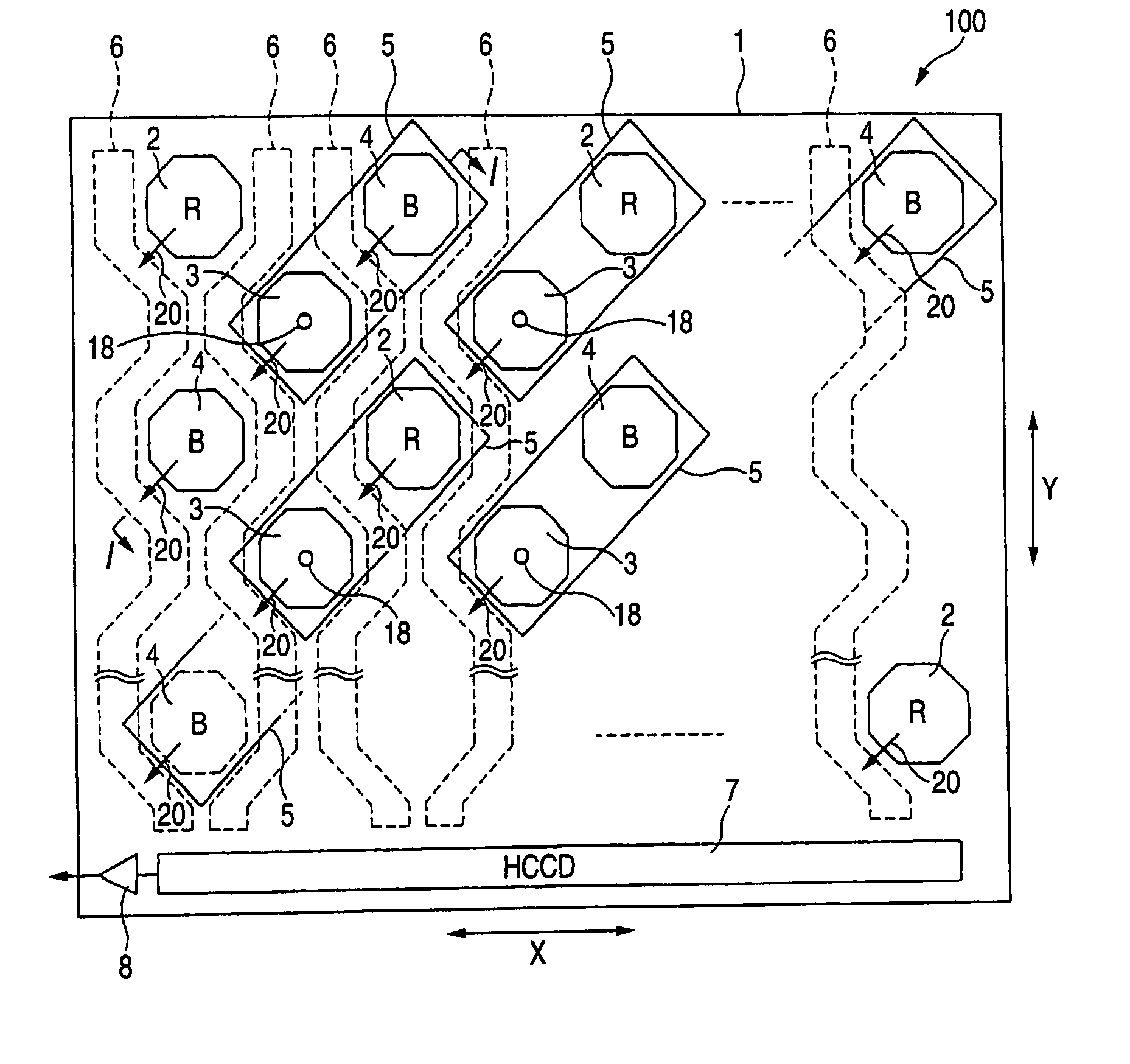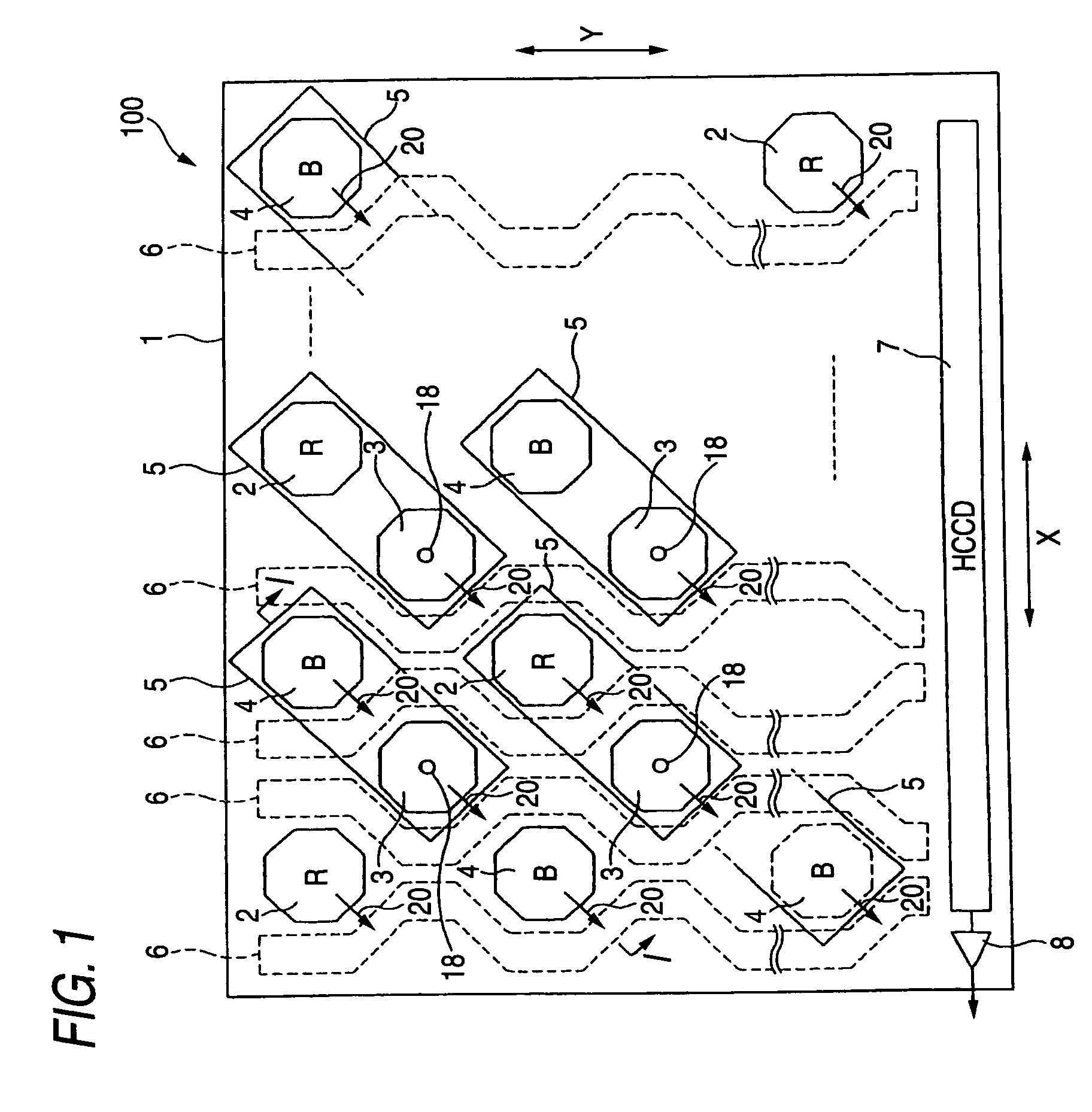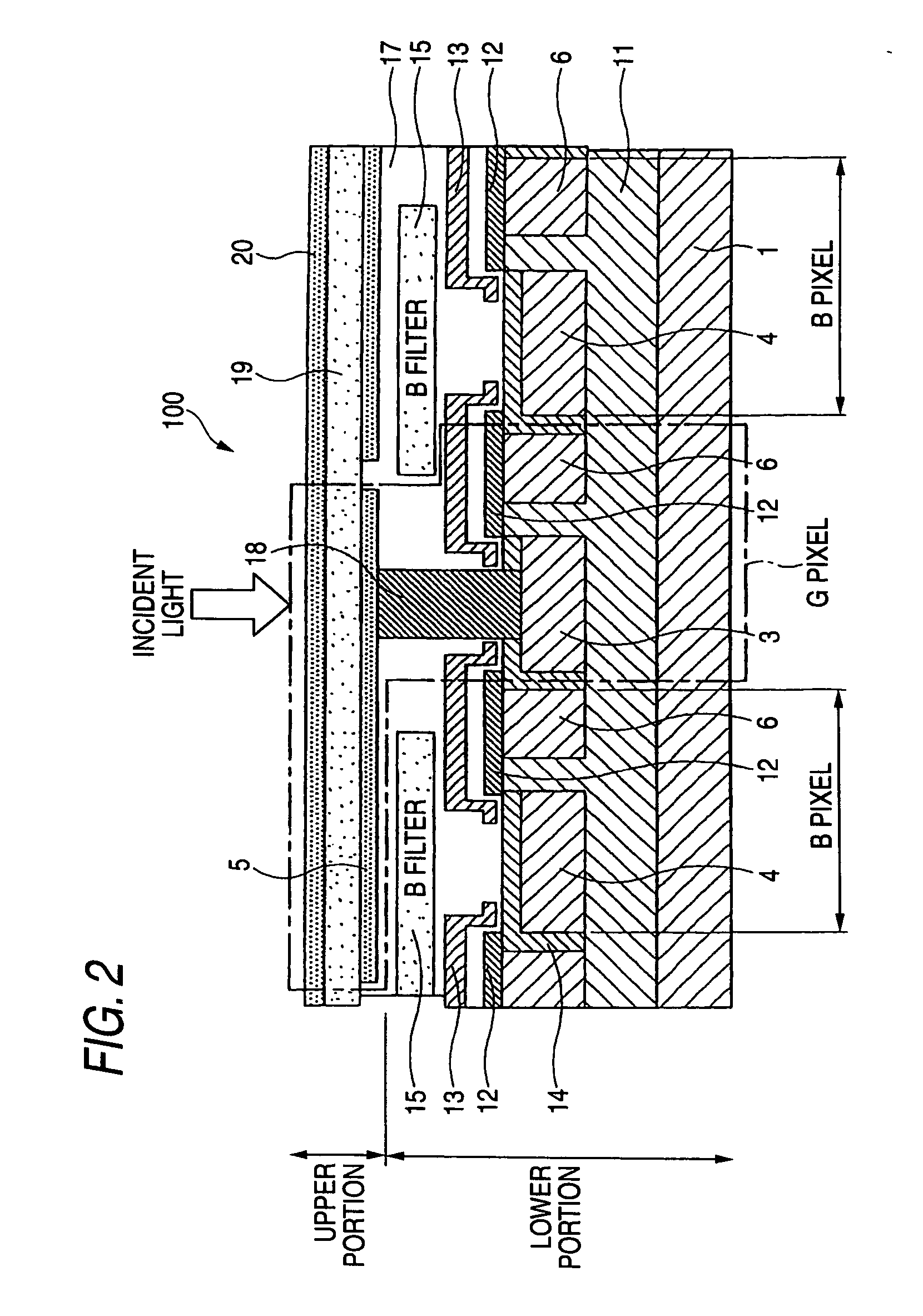Imaging device, signal processing method on solid-state imaging element, digital camera and controlling method therefor and color image data generating method
a solid-state imaging element and image processing technology, applied in the direction of radio frequency controlled devices, instruments, television systems, etc., can solve the problems of reducing the sensitivity or the s/n ratio of the signal obtained from the photoelectric conversion element in the lower portion, reducing the degree of blurring, and enhancing resolution
- Summary
- Abstract
- Description
- Claims
- Application Information
AI Technical Summary
Benefits of technology
Problems solved by technology
Method used
Image
Examples
embodiment 1-1
[0132]FIG. 1 is a diagrammatic plan view of a solid-state imaging element 100 for explaining an embodiment 1-1 of implementation of the invention. FIG. 2 is a diagrammatic sectional view taken on line I-I of FIG. 2.
[0133] On the surface portion of a semiconductor substrate 1 are aligned a plurality of photoelectric conversion elements 2, 4 made of silicon and a plurality of signal charge accumulating portions 3 in the line direction (X direction in FIG. 1) and in the row direction (Y direction in FIG. 1), respectively. In the present embodiment, the total number of the photoelectric conversion elements 2 and 4 is predetermined to be the same as the number of the signal charge accumulating portions 3. The number of the signal charge accumulating portions 3 is the same as the maximum number of pixel data in color image data that can be generated on the basis of a color signal obtained from the solid-state imaging element 100.
[0134] As shown in FIG. 1, in each odd line, a plurality o...
embodiment 1-2
[0219] As shown in FIG. 1, as green signals there are outputted those corresponding to the total number of pixel data in color image data. However, in the case of a solid-state imaging element which doesn't output as red signals and blue signals those corresponding to the total number of pixel data in color image data, red signals and blue signals are interpolated, making it likely that false colors can be generated. The present embodiment will be described hereinafter with reference to signal processing capable of inhibiting the generation of these false colors. This signal processing is executed in the digital signal processing portion 36 or analog signal processing 32 shown in FIG. 7.
[0220] The signal processing will be described hereinafter with reference to color signal obtained from three rows and three lines, totaling 9, of photoelectric conversion elements mainly composed of a photoelectric conversion element 2 or 4 corresponding to one-pixel data in color image data and co...
embodiment 2
[0251] Preferred embodiments of implementation of the imaging device, signal processing method on solid-state imaging element according to the invention and digital camera and its controlling method will be described in connection with the attached drawings.
PUM
 Login to View More
Login to View More Abstract
Description
Claims
Application Information
 Login to View More
Login to View More - R&D
- Intellectual Property
- Life Sciences
- Materials
- Tech Scout
- Unparalleled Data Quality
- Higher Quality Content
- 60% Fewer Hallucinations
Browse by: Latest US Patents, China's latest patents, Technical Efficacy Thesaurus, Application Domain, Technology Topic, Popular Technical Reports.
© 2025 PatSnap. All rights reserved.Legal|Privacy policy|Modern Slavery Act Transparency Statement|Sitemap|About US| Contact US: help@patsnap.com



